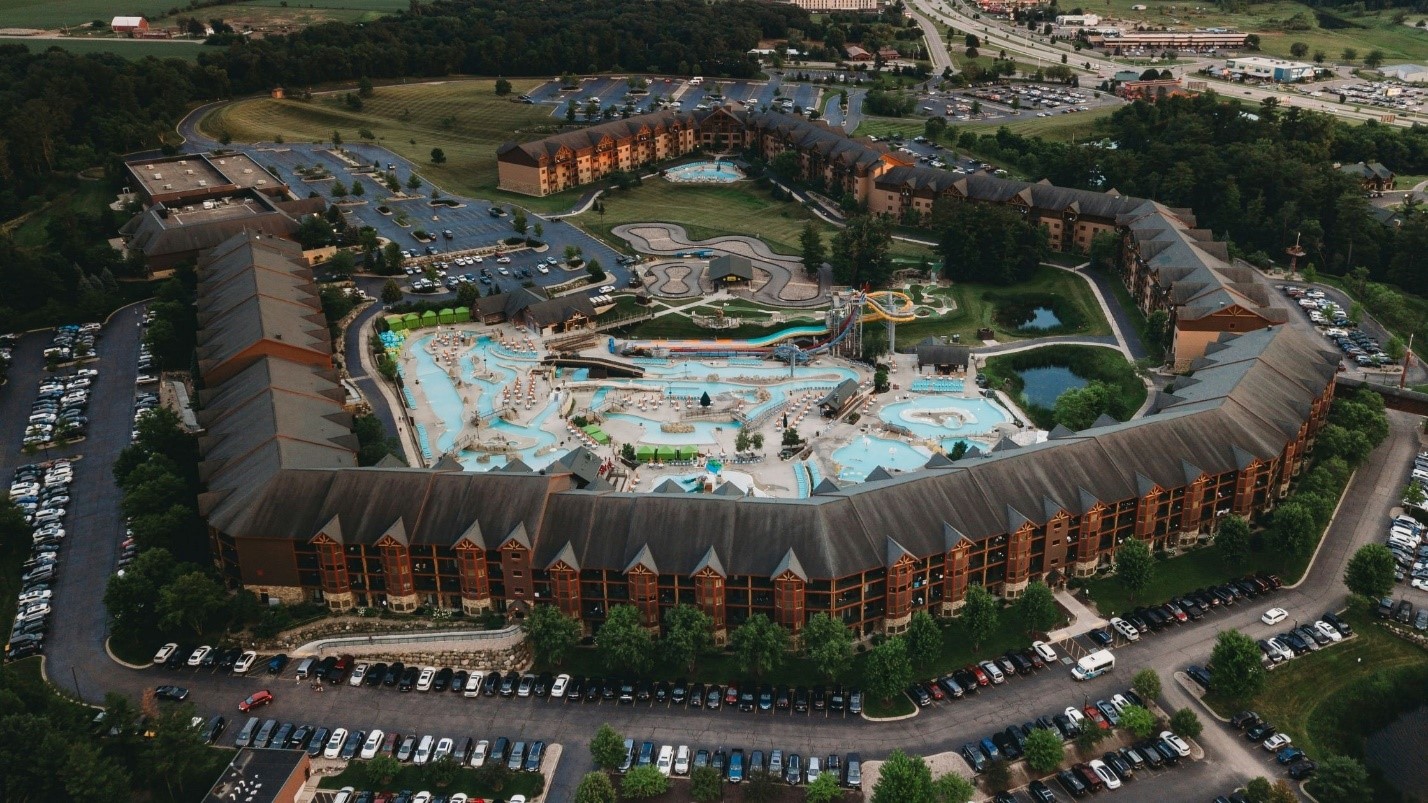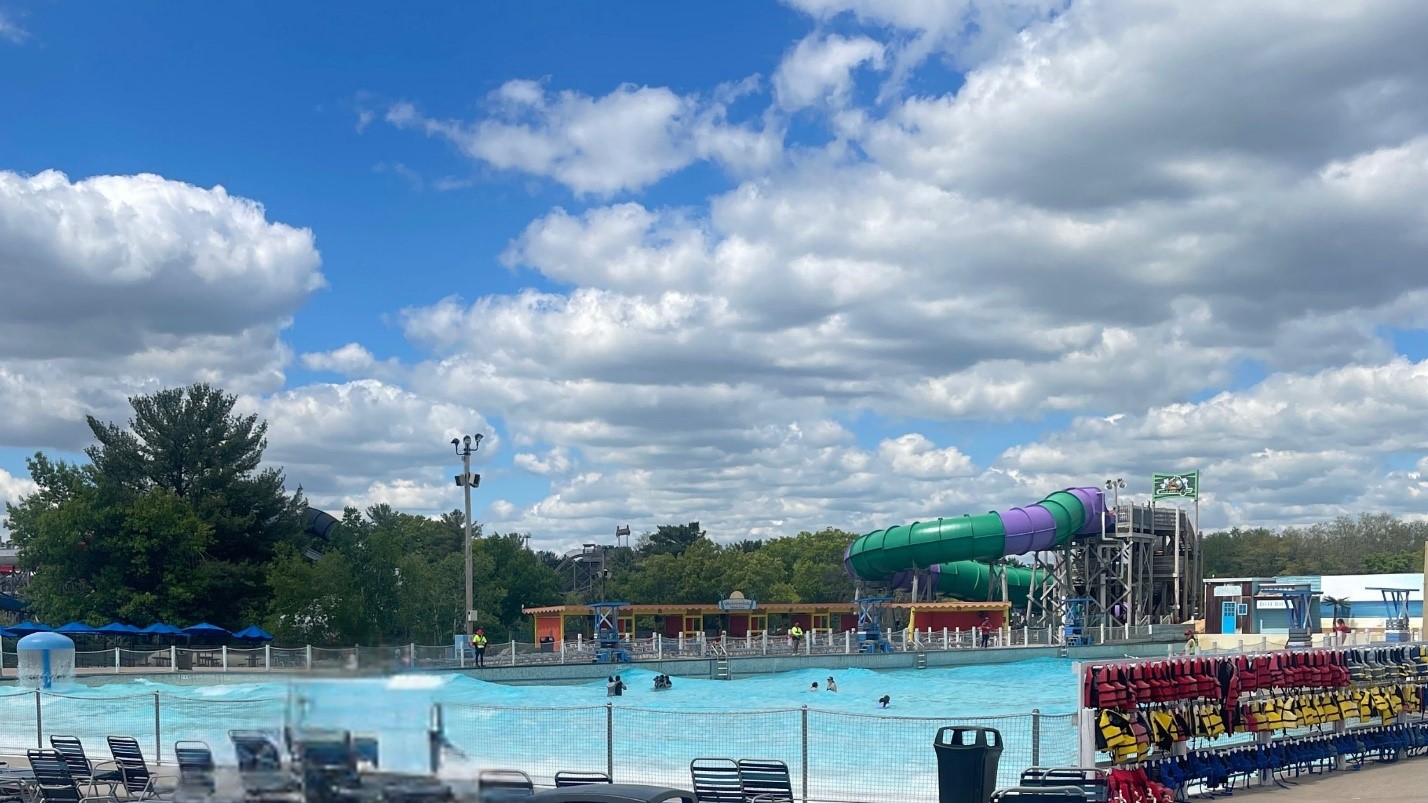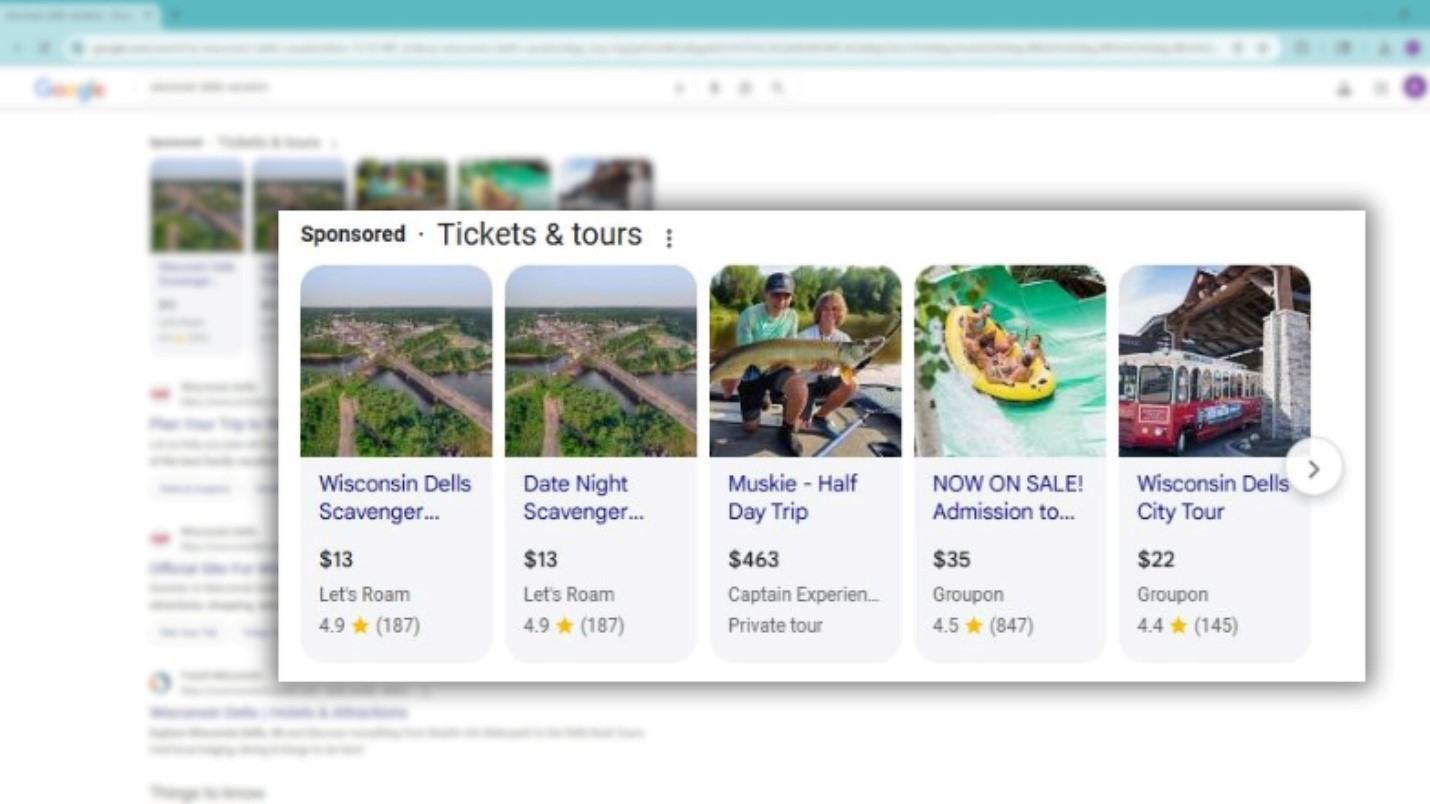
Peak Season Marketing: Quick Wins
Authored by: Kelsey Blum – Partner Marketing Manager | June 16, 2025
Peak season is here, and if you’re like most hospitality businesses in Wisconsin, you’re scrambling to maximize every opportunity during these crucial summer months. Whether you’re managing a resort in Wisconsin Dells, running a cozy B&B in Baraboo, or operating a family restaurant along the tourism corridor, the next few months will determine much of your annual revenue performance.
The good news? It’s not too late to implement powerful marketing tactics that can drive immediate results. While long-term strategic planning is vital, these last-minute tactics can help you capture additional bookings, increase guest spending, and set yourself up for sustained growth throughout peak season.
Here are 10 proven tactics you can implement within the next 7-14 days to increase your peak season performance:
1. Launch Dynamic “Flash Sale” Campaigns for Last-Minute Bookers
Implementation Time: 24-48 hours
Last-minute travelers represent a significant opportunity that many businesses overlook. According to recent industry data, 44% of leisure travelers book accommodations within two weeks of their trip, and these spontaneous bookers often have higher spending power.
How to Execute:
- Create 24-48 hour flash sales for specific dates or room categories
- Use urgency-driven language: “Only 3 rooms left for this weekend”
- Target social media ads to users within a 250-mile radius
- Send push notifications through your mobile app or booking platform
- Partner with local attractions to create “surprise packages”
Pro Tip: Focus these campaigns on typically slower mid-week periods or shoulder dates to increase revenue without cannibalizing your premium weekend rates.
Expected Impact: 15-25% increase in last-minute bookings, with average booking values 20% higher than standard rates due to package inclusions.
2. Optimize Your Google Business Profile for Peak Season
Implementation Time: 2-4 hours
Your Google Business Profile is often the first impression potential guests have of your business. During peak season, search volume for local hospitality businesses increases by 300-400%, making optimization critical.
Immediate Actions:
- Update your business hours to reflect peak season schedules
- Add high-quality photos from recent guests (with permission)
- Respond to all recent reviews within 24 hours
- Post weekly updates about availability, special offers, or local events
- Enable messaging to capture inquiries in real-time
- Add specific attributes: “family-friendly,” “pet-friendly,” “outdoor seating”
Advanced Tactic: Create Google Posts highlighting daily specials, event announcements, or unique experiences. These appear directly in search results and can drive immediate traffic.
Expected Impact: 30-50% increase in direct calls and website traffic from local search results.
3. Implement Real-Time Social Proof Campaigns
Implementation Time: 1-2 days
Social proof is incredibly powerful in the hospitality industry. During peak season, showcasing real guest experiences can influence booking decisions within hours.
Campaign Elements:
- Create a branded hashtag for guest photos (#MyDellsExperience, #BarabooMemories)
- Offer small incentives for social media check-ins (free appetizer, room upgrade)
- Share guest stories daily on Instagram Stories
- Create “Live from [Your Business]” content showing current atmosphere
- Display real-time booking notifications on your website (“Sarah from Chicago just booked!”)
Content Strategy:
- Behind-the-scenes content (staff preparing special dishes, room setups)
- Guest testimonial videos (30-60 seconds)
- “Day in the life” stories following families through their experience
- Time-lapse videos of busy service periods
Expected Impact: 25-40% increase in social media engagement and 150-200% boost in direct bookings from social channels.
4. Create Irresistible Package Deals with Local Partners
Implementation Time: 3-5 days
Package deals not only increase your average transaction value but also improve the guest experience and build valuable local partnerships.

Partnership Opportunities:
- For Hotels: Team up with local attractions, restaurants, and activity providers
- For Restaurants: Partner with hotels for dining packages or local entertainment venues
- For Attractions: Collaborate with accommodations and dining establishments
Package Ideas:
- “Ultimate Family Fun” (accommodation + water park + dinner + mini golf)
- “Romantic Getaway” (room upgrade + spa service + candlelit dinner + wine tasting)
- “Adventure Weekend” (lodging + outdoor activities + packed lunches + gear rental)
- “Taste of Wisconsin” (accommodation + brewery tours + local restaurant credits)
Revenue Benefits:
- Increase average spending per guest by 35-60%
- Reduce marketing costs through partner cross-promotion
- Differentiate from competitors offering single services
- Create higher-value offerings that justify premium pricing
Expected Impact: 20-35% increase in average guest spending and improved occupancy during traditionally slower periods.
5. Launch Targeted Email Campaigns to Past Guests
Implementation Time: 1-2 days
Your existing customer database is your most valuable marketing asset. Past guests are 5x more likely to book again and spend 20% more per visit than new customers.
Campaign Segmentation:
- Recent Guests (last 12 months): “We miss you” campaigns with returning guest discounts
- Seasonal Visitors: Targeted messaging based on previous visit timing
- High-Value Guests: Exclusive offers and VIP treatment previews
- Local Guests: Special rates for “staycations” and local experiences
Message Personalization:
- Reference their previous stay
- Recommend new amenities or services since their last visit
- Offer upgrades based on their previous room type
- Include photos from areas they previously enjoyed
Automation Setup:
- Welcome series for new email subscribers
- Post-stay follow-up with booking incentives
- Birthday and anniversary offers
- Weather-triggered campaigns (“Escape the heat with our pool!”)
Expected Impact: 15-25% increase in repeat bookings and 40-60% higher email open rates compared to generic campaigns.
6. Strengthen Your Online Reputation Management
Implementation Time: Ongoing, 30 minutes daily
Daily Actions:
- Monitor reviews across all platforms (Google, TripAdvisor, Yelp, Facebook, OTAs)
- Respond to reviews within 2-4 hours during business hours
- Address negative reviews professionally and publicly, then move conversations private
- Thank positive reviewers and encourage them to share their experience
Proactive Reputation Strategies:
- Train staff to proactively request reviews from satisfied guests
- Create “review reminder” cards with QR codes linking to your preferred platforms
- Follow up with email requests 2-3 days after checkout
- Offer small incentives for honest reviews (future discount, free merch/tickets, upgrade)
Review Response Templates: Develop professional templates for common scenarios while maintaining authentic, personalized responses. Address specific concerns mentioned in negative reviews and highlight improvements made.
Expected Impact: A 0.2-0.5 star increase in average rating can result in 20-30% more bookings and the ability to charge 10-15% higher rates.
7. Implement Dynamic Pricing Strategies
Implementation Time: 2-3 days
Peak season demand fluctuates significantly, and static pricing leaves money on the table. Dynamic pricing helps you capture more revenue during high-demand periods while remaining competitive during slower times.
Pricing Factors to Monitor:
- Local event calendars and festivals
- Weather forecasts (especially for outdoor attractions)
- Competitor pricing changes
- Historical booking patterns
- Current occupancy levels
Tools and Tactics:
- Use revenue management software or spreadsheet-based models
- Implement weekend vs. weekday pricing differentials
- Create premium pricing for high-demand dates (festivals, holidays)
- Offer early-bird discounts for bookings made 30+ days in advance
- Adjust prices based on remaining inventory
Market-Specific Considerations: For Wisconsin Dells area businesses, factor in show schedules, Noah’s Ark operating hours, and local festival dates. Baraboo businesses should consider Devil’s Lake State Park events and Circus World Museum special exhibitions.
Expected Impact: 15-30% increase in revenue per available room/seat without significantly impacting occupancy rates.
8. Take Advantage of User-Generated Content Campaigns
Implementation Time: 24-48 hours
User-generated content (UGC) is authentic, cost-effective, and highly engaging. During peak season, your guests are naturally creating content so you just need to capture and amplify it.

Campaign Launch Strategy:
- Create a memorable, branded hashtag
- Announce the campaign across all your social media platforms
- Train staff to mention the hashtag during check-in or service
- Display the hashtag prominently in high-traffic areas
Incentive Structure:
- Daily prizes for best photo/video submissions
- Feature winners on your social media channels
- Offer experiences rather than discounts (behind-the-scenes tours, chef’s table dinner)
- Create a “wall of fame” in your physical location
- Repost guest content with proper attribution and permission
- Create themed collections (“Family Fun Friday,” “Sunset Sunday”)
- Use guest content in your advertising (with permission and compensation)
- Develop a content library for future marketing campaigns
Expected Impact: 200-400% increase in social media content volume and 50-80% improvement in engagement rates across platforms.
9. Improve Mobile Experience and Booking Process
Implementation Time: 1-3 days
Mobile bookings account for over 60% of all hospitality reservations during peak season. A poor mobile experience can cost you significant revenue in just a few weeks.
Critical Mobile Optimizations:
- Test your booking process on multiple devices and browsers
- Reduce booking steps to maximum 3-4 clicks
- Implement one-click social media login options
- Ensure fast loading times (under 3 seconds)
- Format images for mobile viewing
- Make phone numbers clickable for instant calling
Mobile-Specific Features:
- GPS-enabled “directions” buttons
- Click-to-call functionality throughout the site
- Mobile-friendly email templates
- App-like experience with smooth scrolling and navigation
- Mobile payment options (Apple Pay, Google Pay)
Conversion Optimization:
- A/B test different call-to-action button colors and text
- Simplify form fields to important information only
- Display trust signals (security badgers, awards, certifications)
- Show real-time availability and pricing
- Include customer service chat options
Expected Impact: 20-40% increase in mobile conversion rates and reduced booking abandonment.
10. Deploy Retargeting Campaigns for Website Visitors
Implementation Time: 2-4 hours
Most visitors who research your business won’t book immediately. Retargeting campaigns keep your business top-of-mind and encourage return visits to complete bookings.

Retargeting Audience Segments:
- Page Visitors: People who viewed specific room types or restaurant menus
- Booking Abandoners: Visitors who started but didn’t complete the booking process
- Price Shoppers: Users who viewed rates but didn’t book
- Local Searchers: Visitors from your geographic target area
Campaign Creative Strategy:
- Showcase high-quality images of your property or dishes
- Include limited-time offers or seasonal promotions
- Display recent guests reviews and ratings
- Highlight unique amenities or experiences
- Create urgency with availability messaging
Platform Distribution:
- Facebook and Instagram retargeting campaigns
- Google Display Network ads
- YouTube video advertisements
- Email retargeting for visitors who provided contact information
Campaign Timing:
- Begin retargeting within 24 hours of initial visit
- Adjust frequency to avoid ad fatigue (maximum 3-4 impressions per day)
- Extend campaigns for 30-60 days depending on typical booking windows
- Increase bid amounts for high-intent audiences
Expected Impact: 15-25% of retargeted visitors will return to complete a booking, with conversion rates 3-5x higher than standard display advertising.
Final Thoughts
Peak season success isn’t just about filling rooms or tables. It’s about creating memorable experiences that drive repeat business and positive word-of-mouth marketing. These tactics work best when implemented as part of a comprehensive strategy that focuses on guest experience alongside revenue optimization.
Remember that Wisconsin’s tourism market is highly competitive, with over $25.8 billion in annual economic impact. The businesses that succeed are those that can quickly adapt, use technology efficiently, and keep a sharp focus on guest satisfaction.
Start with the tactics that align best with your current resources and capabilities. You don’t need to implement all 10 simultaneously. Even 3-4 well-executed tactics can drive significant results during peak season.
The key is to begin immediately. Peak season waits for no one, and your competitors are already implementing many of these strategies. The sooner you start, the more revenue you’ll capture during these crucial months.
Ready to implement these tactics but need help with execution? Our team specializes in rapid-deployment marketing strategies for Wisconsin’s hospitality industry. Contact us for a complimentary peak season marketing audit and customized implementation plan.
